Hecuba is the second wife of Priam. His genealogy was the subject of controversy in Antiquity because, famous because of her fertility, it is said that she gave to Priam nineteen children; Euripides speaks of fifty. Apollodorus, however, says fourteen: Hector is the firstborn; Paris, surnamed Alejandro, the second, whose birth was preceded by a prophetic dream. A dream we are interested now especially.
Shortly before giving birth to her second child, had a strange dream: saw out of her bosom a torch, which set fire to the city of Troy, and even the forests of Ida. Consulted the soothsayers, they stated that the child who would be born would be cause of the ruin of the city.
The legend of the dream of Hecuba back to her the origins of crime which meant the downfall of Troy, because of being mother of Paris as for having refused to kill this one, against the opinion of the gods.
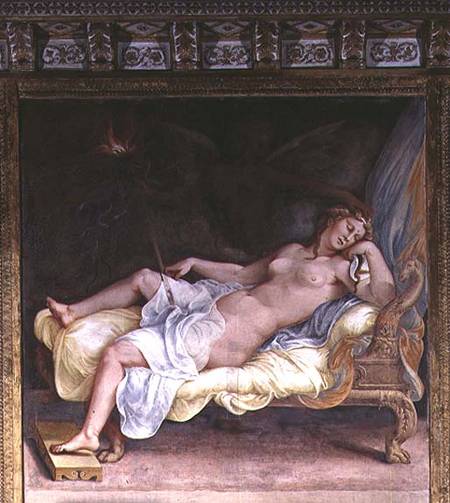
El sueño de Hécuba. Giulio Romano
Giulio Romano, distinguished disciple of Raphael and who Vasari spots as his most brilliant collaborator, had to enter his workshop being still a boy. He soon worked according to the designs of the master and collaborated in the stanze of the Vatican.
Giulio Romano will illustrate the dream of Hecuba in one of his most famous paintings of the Palazzo Ducale in Mantua (Italy), the city of Gonzaga. This topic will spur the imagination of Füssli inspiring him in his famous “Nightmare”.
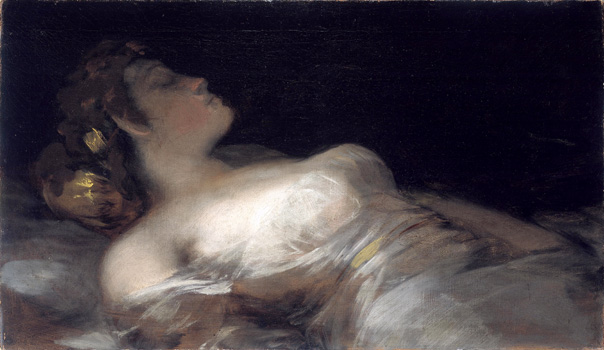
El Sueño (detalle). Francisco de Goya. Oleo / lienzo. 46,5 x 76 cm. National Gallery Dublin. Irlanda.
In my book “Goya’s border” (see on this website) I affirm that there are authors who suggest that Goya knew The Nightmare of Füssli, exposed for the first time in 1782 and widely diffused then in form of engravings. And also Füssli, like Goya, show the dreamer and the dream vision, this means, both the physical presence of the dreamer as also his dream.
In this regard, the question is who was Füssli and how his “Nightmare”. As well, Johann Heinrich Füssli, (Zurich, February 7, 1741 – Putney Hill, London, April 16, 1825) was an excellent draughtsman, painter, historian of art and Swiss writer, later established in Britain, where is known as Henry Fuseli.
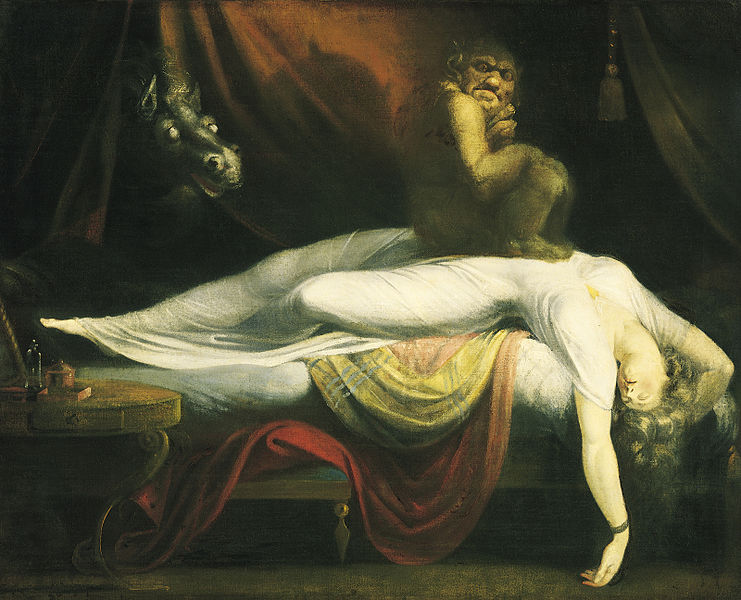
La pesadilla (The Nightmare) o El íncubo. Johann Heinrich Füssli, 1781. Oleo / lienzo. 101 x 127 cm. Detroit Institute of Arts, Detroit, USA
A woman asleep, owned by an Incubus (demon that occurs in dreams of erotic kind) is referred to by the head of a horse’s ghostly appearance. It is one of the most emblematic works of Füssli, specialized in issues related to loneliness, fear, satanism, eroticism and horror, which will inspire the satanic imagery of the 19th century. Its title in German, Nachtmahr, was the name of the horse of Mephistopheles.
Thematically Füssli is a representative closest to German romanticism, since their night and terrifying world is parallel to the dark romance of a Novalis or a Hoffmann. What makes him an important figure when to study the transition between neo-classicism and romanticism, and be able to consider him pioneered in the exploration of the irrational, a fact why with reason has been compared with Goya. Although shortly after his death fell in a relative oblivion, however would be later vindicated by the expressionists and surrealists, who saw it as a predecessor for his poetic of sublime, his allusion to the dream and its nightmare erotica.
Füssli made this work inspired by the Dream of Hecuba of Giulio Romano, although there are who assumed that he would inspire in the Dream of Raphael , by Marcantonio Raimondi.
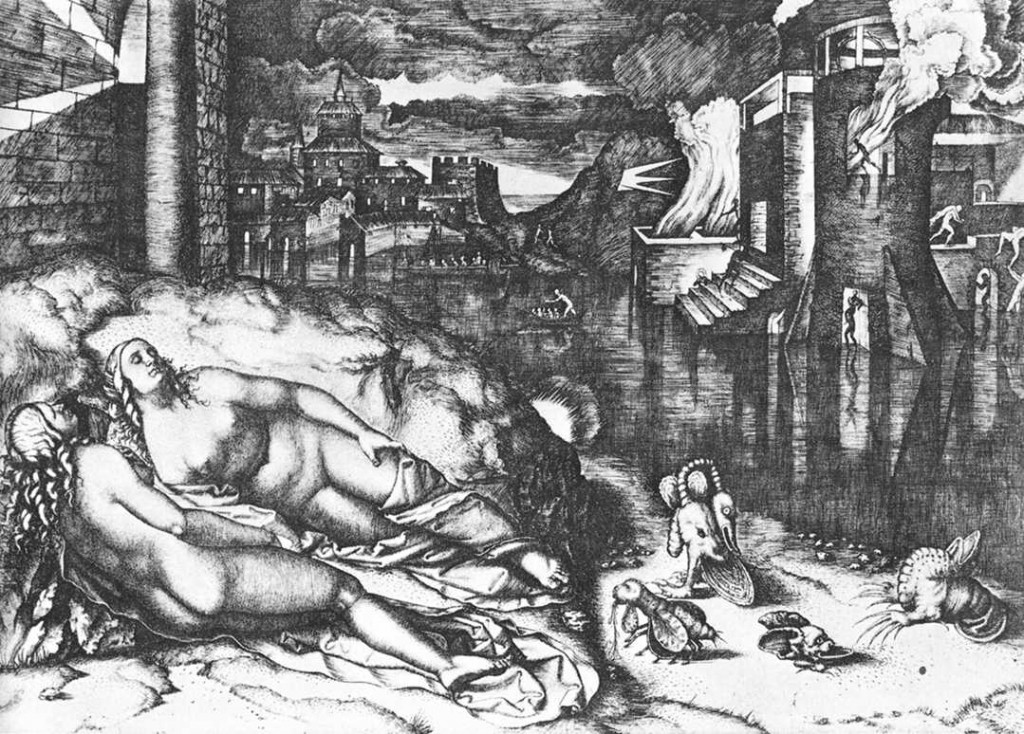
El Sueño de Rafael. Marcantonio Raimondi (1474 – 1534). Primera mitad del siglo XVI. Grabado 230 mm x 330 mm. British Museum
Füssli performed at least two versions on the subject of the Nightmare, the most famous being that of 1781, today at the Detroit Institute of Arts; another, 1790-91, is located in the Goethes Elternhaus in Frankfurt am Main.
Anyway, this representation so characteristic of black romanticism keeps its model trying to sow doubt, give body to the unthinkable and requires the loss of control of the reason and the triumph of the imagination. The movement is well represented by works of artists such as Goya, Friedrich, Füssli, Delacroix, Redon, Munch, Ernst and also Salvador Dalí.
Gonzalo de Diego
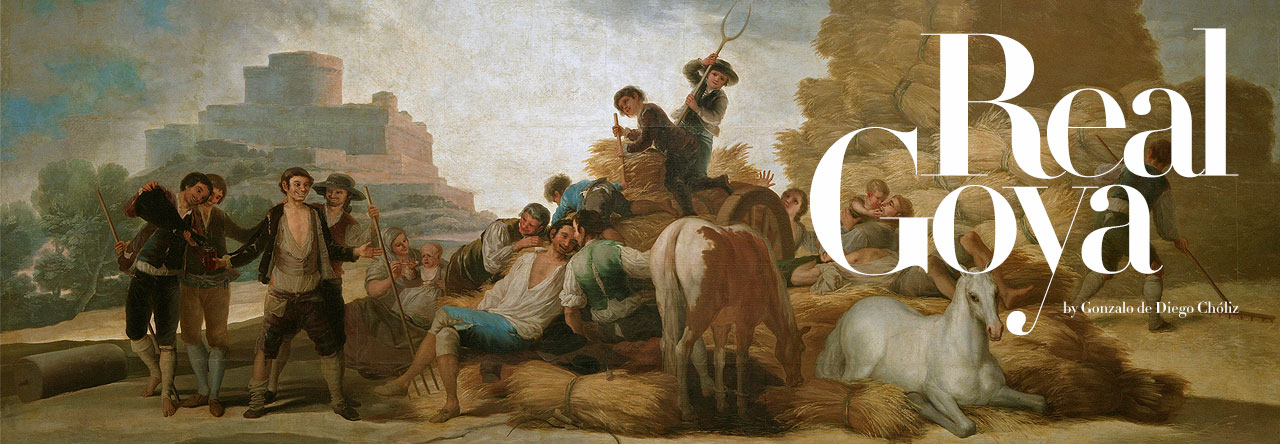
Carlos Bogdanich
Para Karl G. Jung el inconsciente no es un mero reservorio de los deseos reprimidos sino un universo más real e infinitamente más rico para un individuo que su propia conciencia.
El lenguaje del inconsciente son los símbolos y el medio para comunicarlos son los sueños. El inconsciente es el consejero de la conciencia. Todos y cada uno de nosotros guardamos en lo más profundo ese “rico universo”. Sólo los grandes artistas y comunicadores reciben el don de la “llave” para expresarlos y sacarlos a la luz.